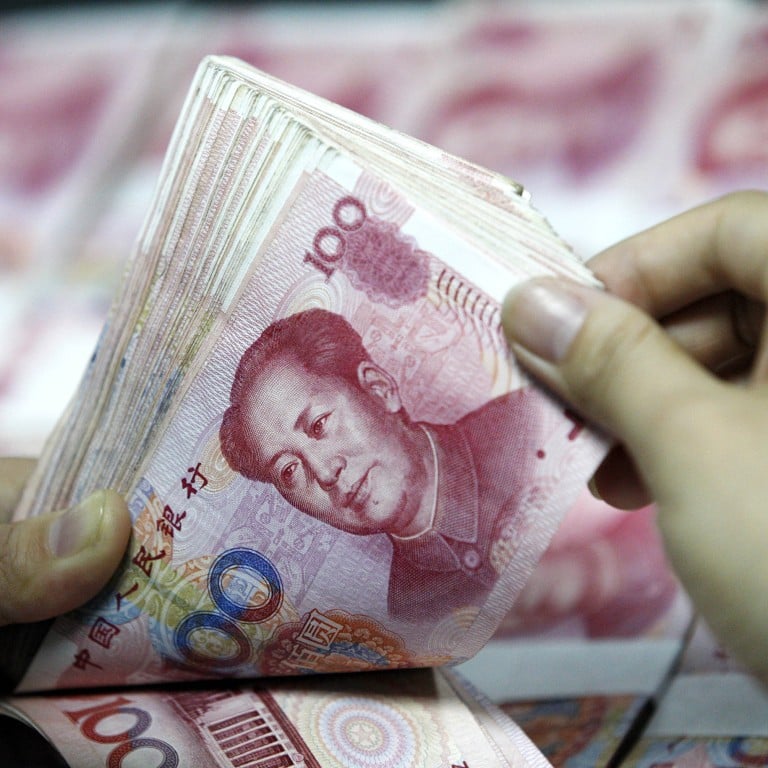
China can boost yuan’s international role, says report
- Despite the increasing use of the currency globally, concerns about its convertibility and the country’s exchange controls linger
- The yuan is far behind the US dollar and euro in a rating of the currency’s ‘internationalisation’ by Renmin University
China has the opportunity to boost the yuan’s international role compared with currencies such as the US dollar and euro, according to a new report.
A report from Renmin University measuring the currency’s “internationalisation” – based on its use in international trading, foreign exchange reserves and transactions – found that the yuan had a score of just 6.4 out of 100 last year.
Although this was the yuan’s highest to date, it was well behind the dollar and euro which stood at 50.5 and 25.16, respectively.
We should also strengthen exchanges with developed countries in low-carbon economic transformation and green financial development
In June the yuan also ranked fifth in Swift’s global payment list with a 2.77 per cent share – well behind the US dollar on 42 per cent or the euro on 21.25 per cent.
Released on Saturday, the Renmin University report said China should push for more free-trade agreements, either bilateral or regional ones, to boost trade and investment opportunities and create favourable conditions for the yuan’s overseas use.
“We should also strengthen exchanges with developed countries in low-carbon economic transformation and green financial development, and tap the potential of the yuan to serve global climate cooperation and low-carbon development,” it said.
It also suggested: “China should actively participate in the formulation of future digital trade rules and global digital economic governance, and give full play to our advantages in digital transformation and central bank digital currency development.”
The yuan is now more used internationally because of China’s importance as a trading partner and the Belt and Road Initiative, an transcontinental infrastructure initiative to which more than 60 countries have signed up.
But it faces many obstacles, including yuan convertibility and China’s capital controls.
Chen Yulu, former deputy central bank governor and now president of Nankai University, said the yuan had already become the third-largest international currency after the US dollar and the euro and its market share and influence were growing.
“To build the yuan into a currency on par with the US dollar and the euro by 2035, it requires three conditions: a modern industrial system supported by the real economy, the deepening of domestic financial markets and big progress for yuan internationalisation infrastructure, and a high-level balance between the institutional opening of China’s financial system and the risk control regime,” he said at an event marking the launch of the report.
Which 8 nations are using China’s yuan more, and how will it affect US dollar?
In a separate report released earlier this month, the semi-official China Banking Association called on state-owned banks and industrial giants to play a leading role by prioritising the use of the Chinese currency in commodity trading and overseas projects.
“Given the adjustment of the international monetary system following the coronavirus pandemic and Russia-Ukraine conflict, yuan internationalisation is now seeing an important window for development,” it said. “Chinese banks should grasp the historic opportunities.”
Data from China’s central bank showed that cross-border yuan transactions totalled 42 trillion yuan (US$5.8 trillion) last year.
Its Cross-Border Interbank Payment System, a yuan payment channel controlled by Beijing, had drawn 1,360 participants by the end of last year, an increase of 101 from a year earlier. The system handled 4.4 million transactions last year, up 31.7 per cent year on year.

